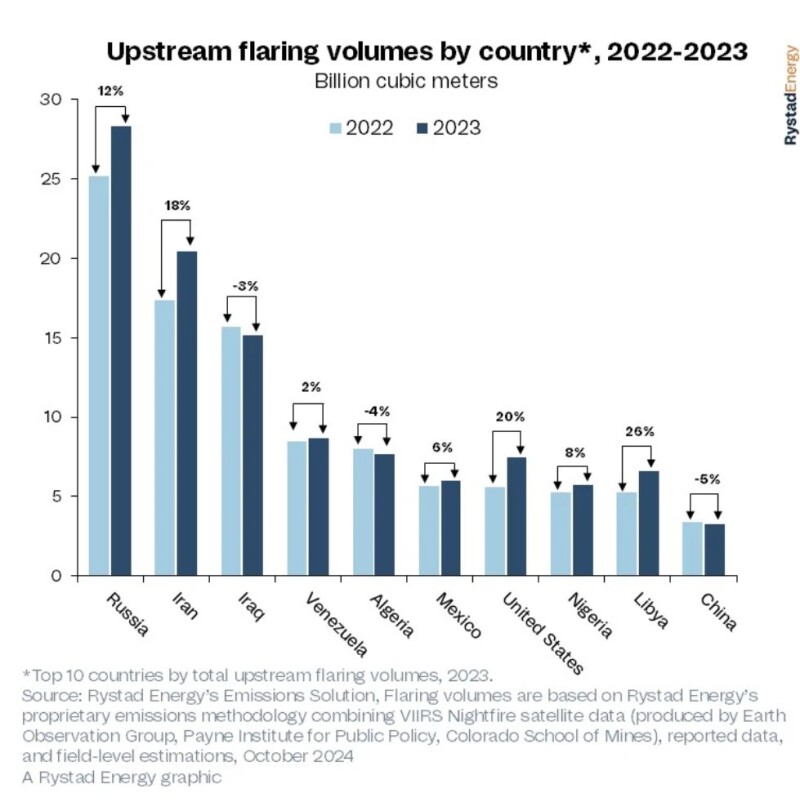Emissions from flaring during upstream oil and gas operations are on the rise, jumping by 7% from 2022 to 2023, according to new figures released by Rystad Energy this week.
While nonroutine flaring is necessary for certain safety and operational procedures, Rystad emphasized that curbing routine flaring would significantly advance the industry's efforts to reduce its emissions footprint.
The market research firm said the global upstream sector is responsible for approximately 1 billion metric tons of CO2 emissions annually, with flaring accounting for about 30% of the total. The estimate translates to an average of nearly 140 Bcm of gas flared globally each year over the past decade.
“Flaring reduction is considered a low-hanging fruit for oil and gas companies trying to reduce their carbon footprint. However, this recent uptick underscores the challenges facing the industry, particularly in key producing countries such as Russia, Iran, and Iraq,” the Rystad report stated.

Rystad's analysis, supported by satellite data and global inventory estimates, revealed that the Middle East, Africa, and Russia accounted for nearly 70% of global flaring volumes in 2023.
Countries in the Middle East flared a combined 45 Bcm of natural gas last year, a 7% increase from 2022. Russia led individual countries with 28 Bcm flared in 2023, marking a 12% year-over-year increase.
Iran, the US, and Libya also showed notable increases, with each country recording a 10% rise in flaring. Rystad said the US made the list due to pipeline bottlenecks in the Permian Basin, which have driven gas prices down in recent months, contributing to increased flaring.
With flaring a central issue between the industry and public stakeholders, the recent increase is seen as “a step in the wrong direction from a climate perspective,” said Magnus Kjemphol Lohne, a senior vice president of energy systems research for Rystad.
The report also highlighted flaring intensity, measured by the amount of CO2 emitted per BOE, as a key indicator of flaring efficiency.
“The US and China, despite being among the top 10 largest emitters in absolute terms, have flaring intensities of less than 3 kg CO2/BOE, significantly below the global average of 5 kg CO2/BOE. Conversely, Venezuela has one of the highest flaring intensities, emitting almost 40 kg CO2/BOE,” the report noted.


